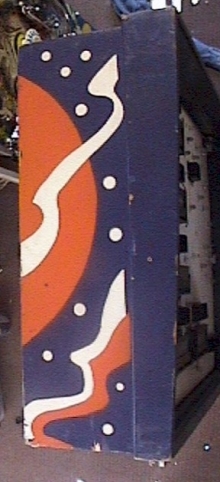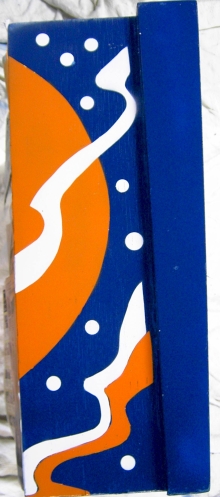Machine Statistics
Production Date: August 1979
Production Run: 2,202 units (full games); 264 knock-down games; Total: 2,466
Design: Mike Kubin
Artwork: Bob Timm
The Game Synopsis/History
Magic was one of the above average Stern entries in the late 70’s to early 80’s. With its curved inlanes and left spinner shot that feeds the drop targets on the right, the game is quicker than most games from this era and has a nice flow to it. An interesting feature is that the scoring value for the inlanes is changed by a rollover star button that is located at the lower half of the playfield between the slingshots. Thus, a ball bounding between the slings will change the value scored by the inlanes. The machine has two spinner shots, a three-bank drop target, three pop bumpers, and a bonus saucer at the top of the playfield. It has a fantasy theme.
This particular restoration required very little playfield work. However, the electronics required a complete re-work as many of the connectors had been snipped off and the wires soldered directly to the boards. In fact, the power board even used an EM style connector. I'll explain more in later pages.
Section 1: Electronics
Problem #1: The Sound Didn’t Work.
There were several things that contributed to this problem. First, the wires from the sound board to the speakers were not configured correctly. Second, the wire from the power supply to the sound board was not connected. This was fixed when I re-worked the power supply board, which was a major overhaul.
Problem #2: Playfield Lights Didn’t Work.
Again, this was caused from the problems mentioned below with the power supply.
Problem #3: Drop Target Bank Would Not Reset After Knocking Down All Targets.
This was a tricky problem to run down. At first, I thought it was just a loose wire on a switch, but all of the switches looked good. Then I noticed that the middle target had one less switch than the other two targets, so I thought that maybe a switch had been removed. But, after looking at the schematics, I realized that this was the way it was supposed to be. The problem ended up being that one of the switch diodes was not soldered on, though when I looked at it visually, it looked like it was connected. This just goes to show that you can’t always just look at this kind of problem, you have to test the parts to see if they are in fact making a connection or working.
Problem #4: The MPU Would Only Give 2 Flashes.
This was just a matter of replacing the 5101 chip at U8.
Problem #5: The Power Supply Board Had Been Hacked To Pieces.
After fixing the MPU board, when I turned the game on, none of the playfield lights worked, the sound didn’t work, and the drop targets would not reset after knocking all three down. In my haste to try to fix these problems, I tried to fix them with the machine in its present condition, rather than fixing it right the first time. Let me explain. If you will notice the pictures on the Miscellaneous Page of the power supply before any work was done, you can see that the operator did not have the right kind of connectors to fix some of the wiring. So, he took the wires and he soldered them to an old EM style connector. He then took these wires and soldered them directly to the pins on the power supply. While this fix worked fine for him (and allowed him to disconnect the power supply), it made troubleshooting a pain for me.
Note that I don't fault him for doing this. At least he made the effort to keep the game running. In fact, he put in a lot of effort to do what he did. But it sure didn't help the next person to own this game (me!).
One of the issues with his hack was that the wire colors from the EM connector to the power supply did not match the soldered in wire colors. Therefore, it made troubleshooting a pain so I had to keep the schematics in one hand and double check if I was working on the right pin or not. I should have rebuilt the whole thing to begin with, rather than try to get the game running in its present condition.
Ultimately, I did replace all of the pins on the power supply and I rebuilt the connectors using the proper connector housings. I also installed heftier 35 amp bridge rectifiers on the power supply and replaced R3.


